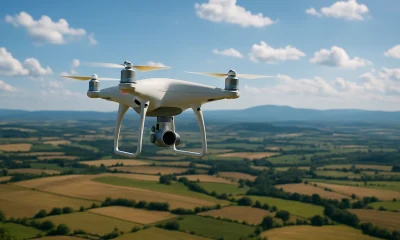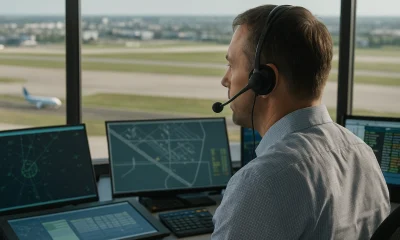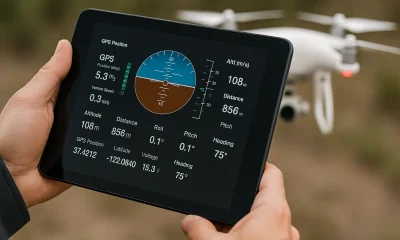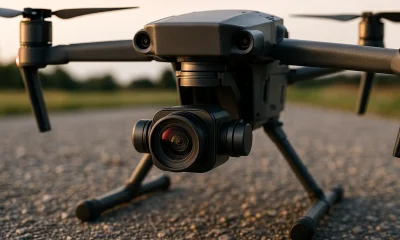- Acronym Guide
- AAM
- ABS
- AC
- ACAS
- ADS-B
- AEHF
- AFAC
- AGL
- AI
- AIM
- ALPA
- ALS
- AM
- AMA
- ANSP
- AOI
- APPI
- AUV
- AUVSI
- ARPAS-UK
- ASTM
- ATC
- ATO
- BLOS
- BVLOS
- CAA
- CAAC
- CAB
- CAP
- CASA
- CATT
- CBO
- CBR
- CBRN
- CDMA
- CDR
- CFI
- CFR
- CIR
- COA
- COMINT
- CORS
- COTP
- COTR
- CPTED
- CV
- C2
- DAA
- DAS
- DEM
- DFI
- DFS
- DGCA
- DHS
- DOD
- DPA
- DPEs
- DRG
- DRO
- DSM
- DSMX
- DSP
- DSSS
- DTM
- EASA
- EFT
- EO
- EOD
- EO/IR
- ELINT
- EMI
- ESC
- EVLOS
- eVTOLs
- FAA
- FCC
- FCS
- FHSS
- FICCI
- FLIR
- FOB
- FOV
- FPS
- FPV
- GBDAA
- GCP
- GCS
- GDPR
- GML
- GNSS
- GPS
- GSD
- GVC
- HDR
- HOGE
- IACRA
- ICAO
- ICS
- IMU
- INS
- IR
- ISA
- ISR
- ITU
- JARUS
- LAAMS
- LAANC
- LAATM
- LAI
- LAS
- LBA
- LIDAR
- LOS
- LSALT
- MAC
- MAVLink
- MLIT
- MMS
- MSL
- MTOM
- NDAA
- NCSL
- NFZ
- NIST
- NMEA
- NOTAM
- NPA
- NPRM
- NTIA
- OBIA
- OEM
- OFDM
- OGI
- OOP
- PAS
- PASM
- PAV
- PCV
- PdM
- PEC
- PIC
- PID
- PIPL
- PLD
- PM
- PN
- PPK
- PPS
- PSM
- PTZ
- PWM
- UAM
- UAOP
- UAS
- UASTM
- UAV
- UCAVs
- UHD
- UHF
- USV
- UTM
- RAIM
- RCC
- RCS
- RFI
- ReOC
- RePL
- RMS
- ROI
- RPAS
- RPC
- RTH
- RTN
- RTK
- SaR
- SAR
- SARP
- SBAS
- S.Bus
- SBIR
- SEDENA
- SfM
- SFOC
- SIGINT
- SLAM
- SMS
- SOP
- SORA
- STANAG
- STTR
- STK
- sUAS
- TCAS
- TCCA
- TFR
- TIN
- TLM
- TOF
- TP
- TPS
- TSA
- VHF
- VLOS
- VTOL
Drone Acronyms
What is GBDAA (Ground-Based Detect and Avoid)?
By
Jacob StonerTable Of Contents

Definition
GBDAA, or Ground-Based Detect and Avoid, is a surveillance and safety system that monitors airspace using ground-based radar, sensors, and communication systems to detect airborne traffic and support the safe operation of drones, especially when they are flying beyond visual line of sight (BVLOS). Unlike onboard systems, GBDAA relies on infrastructure installed on the ground to track both crewed and uncrewed aircraft in a given area.
Usage
GBDAA is commonly used in BVLOS drone missions for public safety, infrastructure inspection, delivery, and environmental monitoring. Ground sensors monitor the surrounding airspace and alert the drone operator or automated flight system when a potential conflict is detected. In many cases, GBDAA works in conjunction with Remote ID and air traffic management platforms.
Relevance to the Industry
GBDAA is essential for expanding drone operations into regulated or shared airspace where visual line of sight cannot be maintained. It provides a layer of safety and regulatory compliance required by aviation authorities for BVLOS flight approvals. GBDAA also supports emerging Uncrewed Traffic Management (UTM) systems by feeding real-time data about airborne traffic, enhancing situational awareness for drone operators and authorities alike.
How Does GBDAA (Ground-Based Detect and Avoid) Work?
Ground-Based Detect and Avoid systems function by continuously monitoring the airspace using fixed-location ground sensors and communicating potential conflicts to drone operators or autonomous flight systems. This technology enables drones to fly safely beyond visual line of sight (BVLOS) by relying on remote surveillance infrastructure. Here’s how GBDAA works step by step:
Deployment of Ground Sensors
A network of ground-based sensors—such as radar units, ADS-B receivers, and RF detectors—is installed in the area of drone operations. These sensors scan the sky for cooperative (transmitting) and non-cooperative (non-transmitting) aircraft.
Real-Time Airspace Monitoring
The ground sensors continuously collect data on all aircraft within the coverage zone. This includes position, altitude, speed, and heading. Cooperative aircraft are tracked through systems like ADS-B or transponder signals, while radar helps detect non-cooperative aircraft.
Data Processing and Conflict Detection
The incoming data is analyzed by GBDAA software, which compares the drone’s flight path with the location and movement of other airspace users. When a potential conflict is identified—such as a nearby aircraft entering the drone’s airspace—the system flags the event.
Alerts and Deconfliction Guidance
The GBDAA system sends alerts to the drone operator or to the drone’s onboard flight controller if the operation is automated. Based on system configuration, it may:
Notify the operator to take manual action.
Automatically reroute or pause the drone.
Trigger return-to-home (RTH) or hold-in-place protocols.
Integration with UTM and ATC Systems
GBDAA can feed live data into broader Uncrewed Traffic Management (UTM) platforms and optionally coordinate with local Air Traffic Control (ATC) if integrated into manned airspace, helping regulators monitor safe coexistence of all airspace users.
By relocating the “detect and avoid” function to the ground, GBDAA enables safer and more reliable BVLOS drone operations—especially in scenarios where onboard sensors may be limited by size, weight, or coverage.
Example in Use
“To meet BVLOS requirements, the drone delivery service deployed a GBDAA system to monitor nearby aircraft and ensure deconfliction in real-time.”
Frequently Asked Questions about GBDAA (Ground-Based Detect and Avoid)
How does GBDAA differ from onboard detect-and-avoid systems?
Answer:
Onboard systems use cameras, LiDAR, or radar mounted on the drone itself to detect hazards.
GBDAA uses ground-based infrastructure to monitor the airspace and communicate threats to the drone or operator, often covering larger areas with broader surveillance capabilities.
Where is GBDAA most commonly used?
Answer:
In BVLOS operations, especially in rural or semi-controlled environments.
Military training ranges, drone corridors, and test sites.
Critical infrastructure monitoring, such as pipelines, power lines, or railways.
Is GBDAA required for BVLOS operations?
Answer:
In many jurisdictions, yes. Aviation authorities like the FAA (U.S.) or Transport Canada require a robust detect-and-avoid solution for BVLOS authorization. GBDAA is often used as part of the risk mitigation strategy during waivers or special flight operations.
For examples of these acronyms visit our Industries page.
As the CEO of Flyeye.io, Jacob Stoner spearheads the company's operations with his extensive expertise in the drone industry. He is a licensed commercial drone operator in Canada, where he frequently conducts drone inspections. Jacob is a highly respected figure within his local drone community, where he indulges his passion for videography during his leisure time. Above all, Jacob's keen interest lies in the potential societal impact of drone technology advancements.
Pros
Cons
You may like


What is BLOS (Beyond Line of Sight) & How Does it Work?


What is ATO (Authority to Operate) & How Does it Work?


What is ALPA (Air Line Pilots Association) & How Does it Work?


What is AEHF (Advanced Extremely High Frequency)?


What is TLM (Telemetry) & How Does it Work?


What is PTZ (Pan-Tilt-Zoom) & How Does it Work?